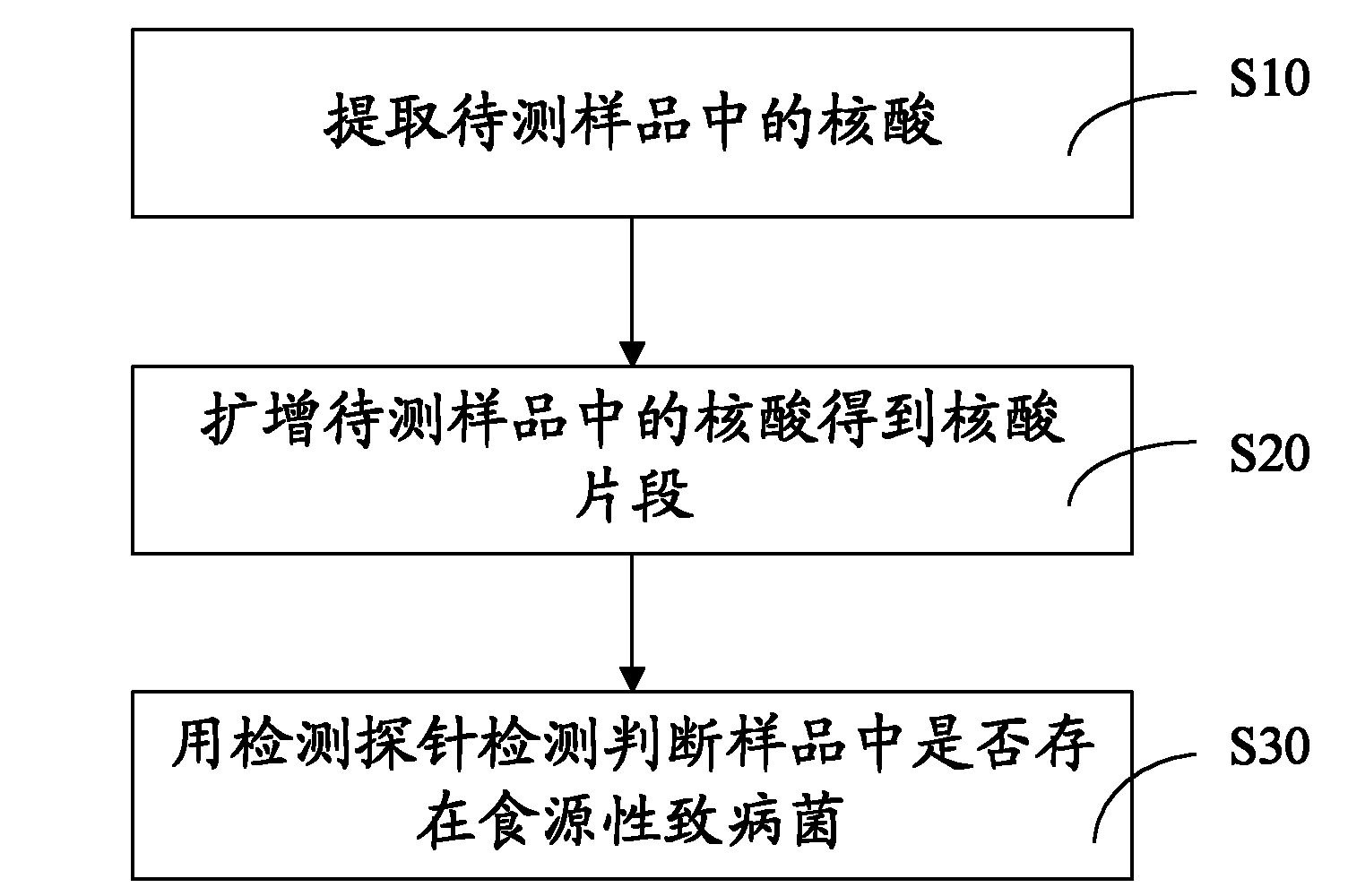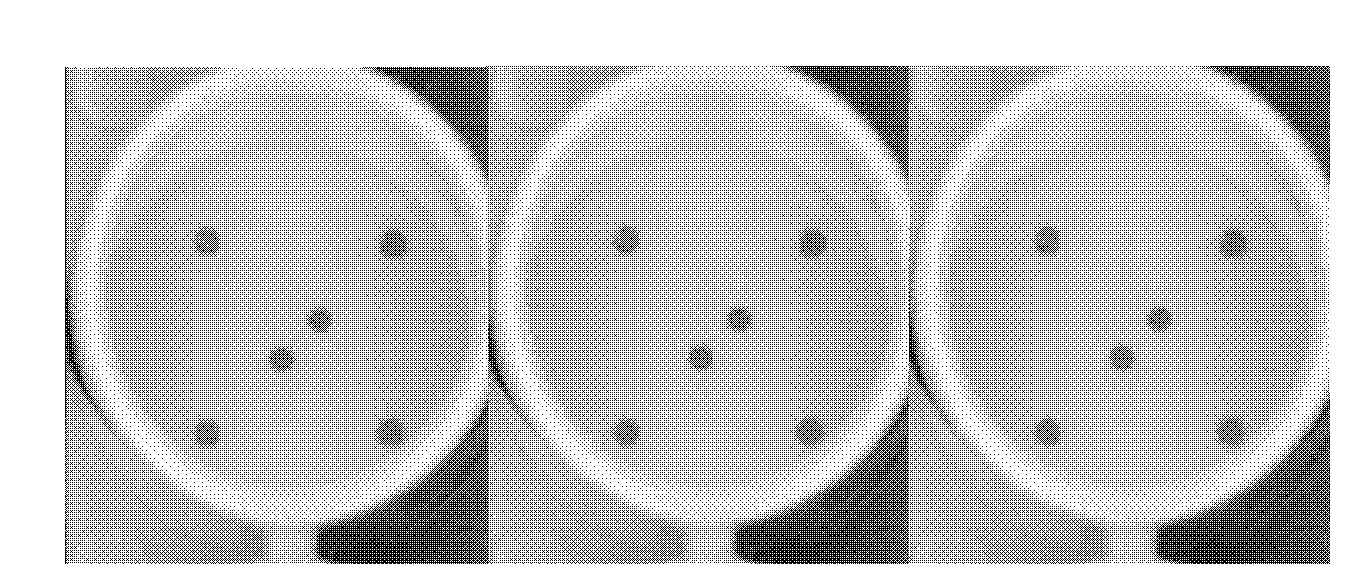Kit and method for detecting food-borne pathogenic bacteria
A food-borne pathogenic bacteria and detection kit technology, applied in the field of molecular biology, can solve the problems of cumbersome operation steps, inability to cope with pathogenic bacteria, and long time consumption
- Summary
- Abstract
- Description
- Claims
- Application Information
AI Technical Summary
Problems solved by technology
Method used
Image
Examples
Embodiment 1
[0102] Design and prepare primers and probes
[0103] By analyzing the gene sequences of 12 common food-borne pathogenic bacteria, a relatively conservative sequence is selected as the target amplification sequence, and the PCR for amplifying the target amplification sequence is designed according to the target amplification sequence Amplification primers and probes that specifically bind to the targeted amplification sequence.
[0104] The 12 targeted amplification sequences and their corresponding 12 sets of PCR amplification primers and 12 probes are as follows:
[0105] The first targeted amplification sequence is the nucleic acid fragment shown in SEQ ID NO.1 of Staphylococcus aureus, the corresponding upstream primer sequence is shown in SEQ ID NO.13, and the downstream primer sequence is shown in SEQ ID NO.25. Shown, the probe sequence is shown in SEQ ID NO.37.
[0106] The second targeted amplification sequence is the nucleic acid fragment shown in SEQ ID NO.2 of Sal...
Embodiment 2
[0121] Foodborne pathogenic bacteria detection kit and detection method
[0122] The detection kit includes the above-mentioned 12 sets of primers and 12 probes.
[0123] In a preferred embodiment, the detection kit also includes a PCR positive quality control probe, a PCR positive detection probe complementary to the PCR positive quality control probe, and a PCR positive detection probe primer for amplifying the PCR positive detection probe Pair, positive hybridization control probe, and positive hybridization detection probe complementary to the positive hybridization control probe.
[0124] The PCR positive quality control probe sequence is shown in SEQ ID NO.49, the PCR positive detection probe sequence is shown in SEQ ID NO.50, and the upstream primer sequence of the PCR positive detection probe primer pair is shown in SEQ ID NO.51 , the downstream primer sequence of the PCR positive detection probe primer pair is shown in SEQ ID NO.52, the sequence of the hybridization ...
PUM
 Login to View More
Login to View More Abstract
Description
Claims
Application Information
 Login to View More
Login to View More - R&D
- Intellectual Property
- Life Sciences
- Materials
- Tech Scout
- Unparalleled Data Quality
- Higher Quality Content
- 60% Fewer Hallucinations
Browse by: Latest US Patents, China's latest patents, Technical Efficacy Thesaurus, Application Domain, Technology Topic, Popular Technical Reports.
© 2025 PatSnap. All rights reserved.Legal|Privacy policy|Modern Slavery Act Transparency Statement|Sitemap|About US| Contact US: help@patsnap.com



